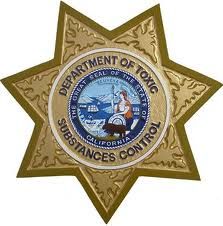Toxic cleanup agency under fire from legislators

 The California Department of Toxic Substances Control is in charge of cleaning up the state’s hazardous waste sites. But lately, the agency has had to focus on cleaning up its own image after a recent audit criticized DTSC’s 27 years of mismanagement that has resulted in $194 million in unrecovered cleanup costs.
The California Department of Toxic Substances Control is in charge of cleaning up the state’s hazardous waste sites. But lately, the agency has had to focus on cleaning up its own image after a recent audit criticized DTSC’s 27 years of mismanagement that has resulted in $194 million in unrecovered cleanup costs.
The agency has also come under fire from state legislators for failing to adequately crack down on polluters. Two bills on Gov. Jerry Brown’s desk seek increased accountability, transparency and oversight of DTSC.
Senate President pro Tempore-elect Kevin de León, D-Los Angeles, authored Senate Bill 812. That bill, along with a companion measure, Senate Bill 712 by Sen. Ricardo Lara, D-Huntington Park, is in response to DTSC’s failure to address contamination issues at a battery recycling facility in Los Angeles, according to a de León press release.
The bills require DTSC to approve or deny hazardous waste permits within three years of the permit expiration and disclose permits, violations and corrective actions. The bills also create a community-based DTSC oversight committee and increase the interest rate charged to late-paying polluters.
As of Thursday morning, Brown had yet to sign or veto the bills.
‘Golden Wasteland’
Also angry at DTSC are liberal advocacy groups like Consumer Watchdog, which last year issued a scathing report titled, “Golden Wasteland: Regulating Toxics, or Toxic Regulation?”
Last week the Senate Environmental Quality Committee held an oversight hearing that placed DTSC officials on the hot seat. Since DTSC Director Debbie Raphael resigned May 31 after three years on the job, it was left to interim Director Miriam Barcellona Ingenito to put the best face on an ugly situation.
The focus of the hearing was on the Aug. 7 report by state Auditor Elaine Howle, “California Department of Toxic Substances Control: Its Lack of Diligence in Cost Recovery Has Contributed to Millions in Unbilled and Uncollected Costs.” Its key findings:
- “Because of pervasive issues with its cost recovery process, as of March 2014 the department had 1,661 projects totaling almost $194 million in unbilled and billed but uncollected cleanup costs (outstanding costs) incurred from July 1987 through December 2013.
- “The department is unlikely to collect millions in outstanding costs for projects due to several factors:
- “The statutes of limitations may have already expired.
- “The department cannot verify the billing status on many projects with outstanding costs due to poor documentation.
- “Some of the outstanding costs involve 61 projects affected by bankruptcies or subject to ongoing litigation.
- “Although the department has established updated cost recovery procedures, it still lacks processes for tracking and monitoring when the statute of limitations on contaminated sites will expire.
- “The department has not consistently used some of its tools to ensure that it maximizes the recovery of costs from responsible parties. Further, the interest rate it can charge for late payments is so low that it does not create an incentive for prompt payment.”
Hearing
Committee Chairman Sen. Jerry Hill, D-San Mateo, led off the Sept. 16 hearing by citing the $194 million “worth of unrecovered funds for which the department was not able to provide accounting. And frankly, I think speaking not just as a state senator but as a citizen of California, that is totally unacceptable.”
Hill asked Ingenito how much of the $194 million would eventually be recovered.
“That’s a really hard question to answer,” she said, citing unknowns such as the potential for bankruptcy being declared by those responsible for the pollution and whether the statute of limitations had run out on the department’s ability to collect.
Ingenito began her presentation by pointing out the $194 million in unrecovered costs represents only 10 percent of the $1.9 billion the DTSC has spent cleaning up hazardous waste sites in California. The problem in not collecting that last 10 percent has been systemic.
“Historically our cost-recovery efforts have suffered from a lack of clear guidance, consistency between our offices, measurement tools, systems and standard processes,” she said. “And this is not an excuse, this is a fact. It is an underlying fact that has posed a significant challenge to past administrations.
“[Cost recovery] wasn’t necessarily the top priority, because the top priority was then and is now always to address the safety first. We always go in when there’s a health and safety issue to clean up the site. And then we go in and deal with how do you go after addressing the responsible parties and finding who the polluters are. The systems and processes to do that have not always been in place.
“And that is the key difference between what we historically have done in past administrations and what we are doing now. Other administrations have known that we have a cost-recovery problem. And what they have done is basically addressed it as a collections problem. They have never gotten to the root problem, the root causes, which we believe to be nonexistent, inconsistent and antiquated processes.”
Ingenito and Terri Hardy, the DTSC special assistant for program review, outlined a variety of policies, procedures and training programs they are implementing to fix the problems. The Legislature aided the effort by approving $1.6 million to hire 14 additional people for two years.
“Because of the systemic improvements that we have begun to make and implement in the last year, I’m happy to report that the number of sites with outstanding costs have been reduced from 2,700 to about 1,600, which is a 40 percent reduction,” said Ingenito.
“We’ve reduced the amount of outstanding costs by more than $24 million. And of that, about $4.7 million has been received in payments in the last six months alone. And we have referred cases representing more than $60 million to the attorney general’s office to pursue legal options.
“I want to assure you that I fully recognize that we do still have issues and significant challenges in front of us. We look forward to working with you to establish permanent solutions to this problem and to ensure that polluters and not taxpayers pay for the cost of cleanup. While we’ve been able to resolve approximately 90 percent of our costs, we can do better.”
Concerns
It was looking like the DTSC officials might get through the hearing relatively unscathed. But then auditor Howle responded to their presentation by suggesting they might be better at talking the talk than walking the walk.
“I do have concerns based on what we just heard,” Howle told the committee, adding that DTSC officials had assured her that new procedures would be in place by the end of August. “And what we are hearing today is it appears those things are not quite in place yet. So we have some concerns with respect to that.”
One of the major problems is the department’s antiquated database, she said. It contains inaccurate information on “orphan sites,” referring to a site where no responsible party has been found for the pollution.
“Well, when we looked at some of the project files, there actually was a responsible party identified,” said Howle. “So one of the things we believe they really need to continue to do is correct the database to make sure that they have not improperly designated a site as an orphan site and therefore believe there’s no one there to try to recover funds from.”
The database should be updated by July 2015, when it is planned to be rolled into the Financial Information System for California, said Howle. But DTSC officials said it won’t be ready by then, and will take two years to fix the database.
Performance metrics were promised to be in place by September, but the officials failed to mention them in the hearing, said Howle. And she found the collection log DTSC put in place to ensure collection letters go out at 30-day intervals wasn’t being used.
DTSC is scheduled to report to Howle’s office in October on its progress and then do periodic follow-ups. Hill said he wants the department to keep the committee up-to-date as well.
Related Articles
ObamaChoppers to cost $20 billion
You would think America didn’t have any economic troubles, and the government could waste whatever money it wanted to on
Caltrans greenlights bike lane expansion
Bending to legislative prodding from Sacramento, California’s transportation bureaucracy has moved ahead with statewide plans to standardize and expand the Golden
CA farmers lead new immigration push
Immigration has become the biggest national issue involving California’s farmers. In the state’s agricultural heartland, a host of issues are




